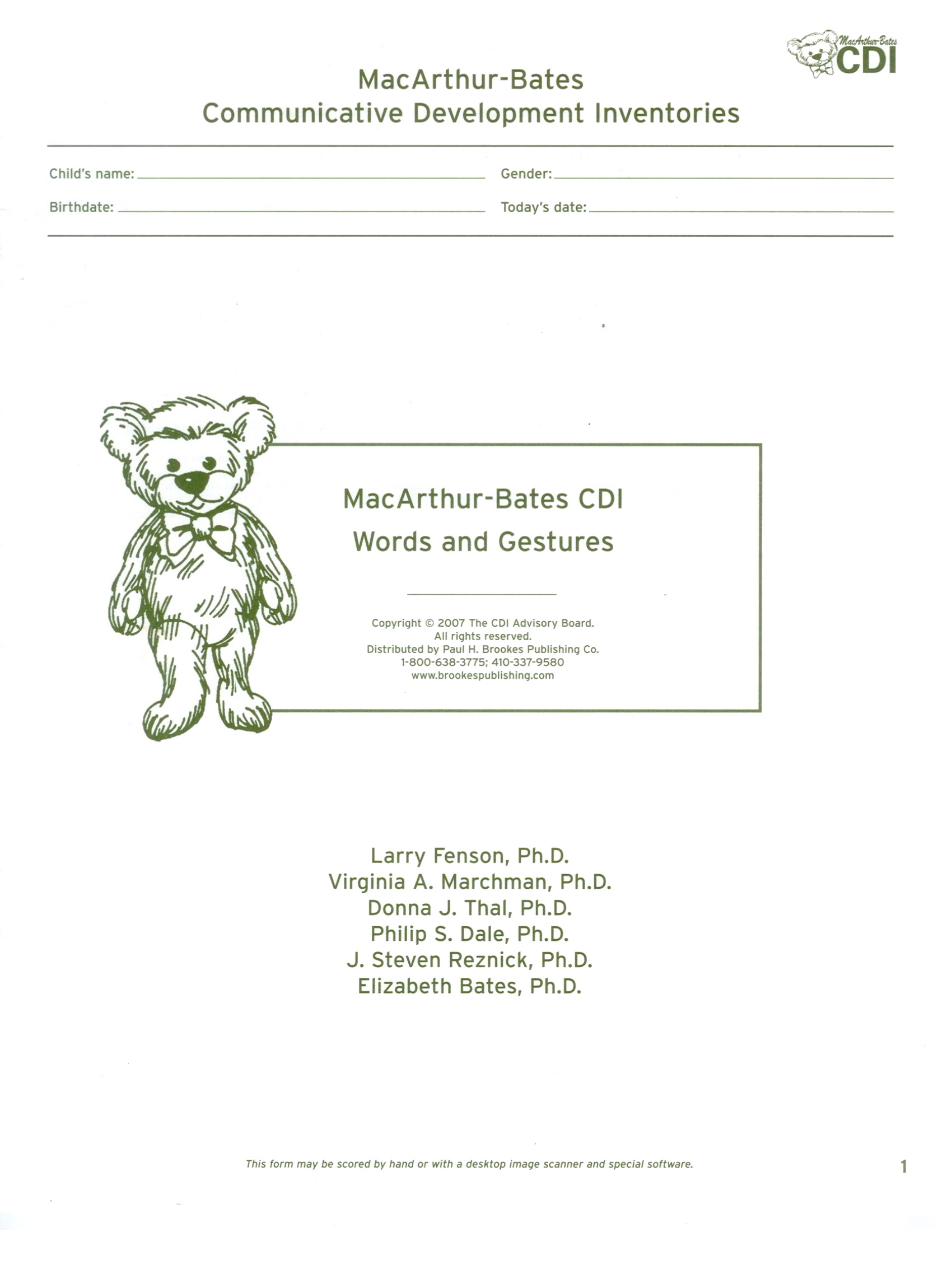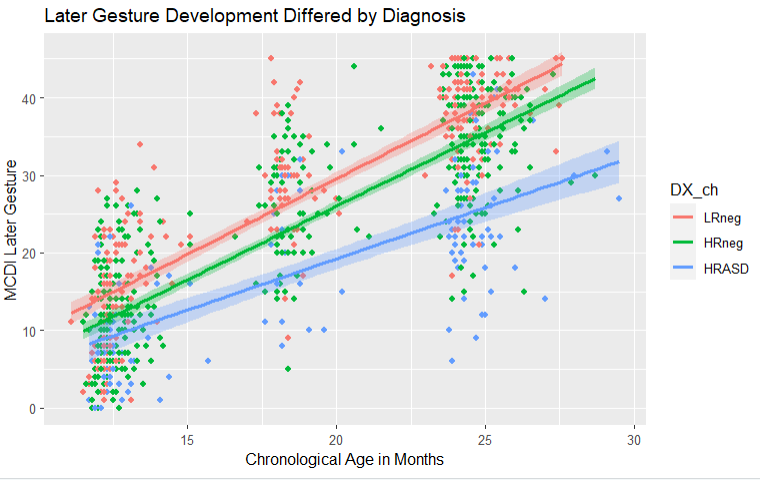
Validation of the MCDI: A Tool for Early ASD Prognosis

Introduction
Autism is a neurodevelopmental disability that imposes challenges in social, communication, and behavioral skills. These impacts can have cascading effects on later life outcomes including education, language development, and life trajectory. Researchers have started to develop tools that can assess the early symptoms for autism for possible early interventions.
How do we understand what infants are saying? Through gesture! Gesture (pointing,grabbing,waving) allows us to understand what young children are saying since they have not fully developed fluent speaking skills yet. Also, gesture is important as gesture has been found to be linked with language growth such as the ability to understand sentence structure, vocabulary growth, and general verbal skills. Research has shown that children with autism have lower gesture production compared to children without, suggesting that children with autism likely to have lower language and communication skills.
Goal:
The goal of this project has three parts:
- Are gesture skills related to autism indications?
- What kind of methods will allow us to capture gesture skills?
- Is the tool that we are using to capture gesture skills valid?
Materials
There are a variety of methods to analyze gesture like video recordings of the children or a parent-report surveys. However, since we want to see whether gesture skills are related to early red flags for autism, it would be best to quantify the numbers. We most likley will need a large number of participants for this study since we are looking to validate the theory of whether gesture skills can be an indication for ASD. Therefore, it would be best to use a survey collected from parents.
The MacArthur Communicative Development Inventory (MCDI) is a parent-report inventory that assess gesture skills in children without and with neurodevelopmental disabilities such as children with autism. This inventory has been used consistently but has never been validated as a tool that can assess early indications for autism.

Analysis
Participants were recruited as a part of a longitudinal study in partnership with the IBIS
We used a general linear mixed model to characterize gesture skills across the time points.

Results
Our results indicate that the MCDI can capture the gesture differences early on even before children are diagnosed with autism. Based on our graph below, we can see that children with autism (HRASD) have different gesture productions throughout their first 2 years of development. We can conclude that the MCDI can be a potential early indicator to detect early autism before formal autism diagnosis.


Impact
To recap, the MCDI can capture the difference of gesture development. Furthermore, the MCDI can be used as an early indicator for autism. Educational and clinical assessments companies like WPS and Pearson can translate this inventory as a standardized testing to confirm whether gesture is meeting correct gesture milestones at certain ages. I can see a lot of potential for the MCDI to be used for clinicians and the the general public like parents using this. For example, if parents are using this and see that their children are not meeting the range of gesture development, they can reach out to their pediatricians for further evaluations.
